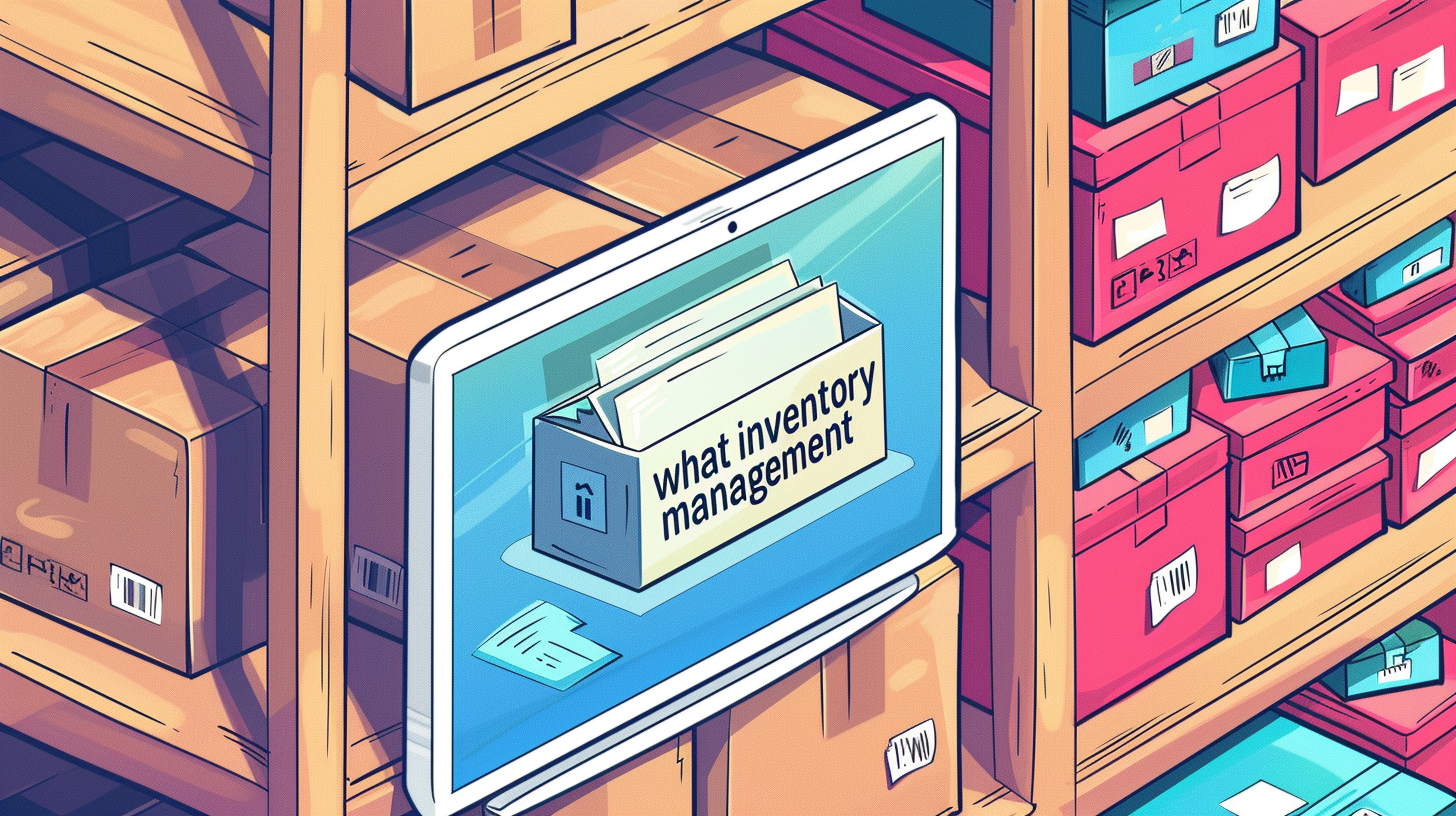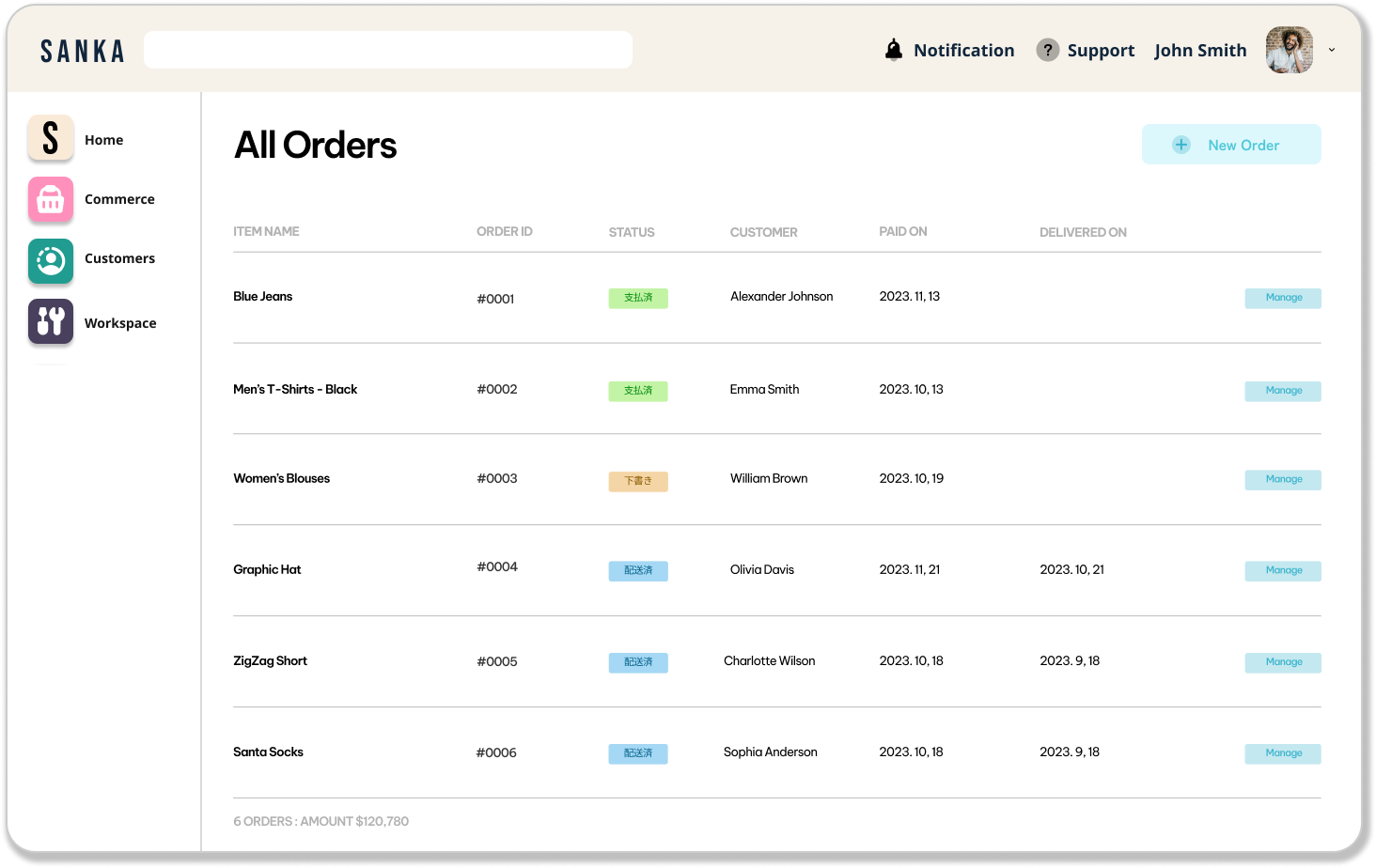Introduction
Managing inventory effectively is crucial for the success of any business that sells products.
Early in your business journey, understanding how to balance the scales of what you have, what you need, and when you need it can make a significant difference in your operations and profitability.
This blog post will delve into the essentials of inventory management, highlighting its benefits and offering practical examples to help you implement these strategies in your business.
What is Inventory Management?

Inventory management refers to the process whereby a business orders, stores, and uses inventory to meet customer demand while minimizing costs and maximizing efficiency.
This management encompasses everything from tracking products as they are bought from suppliers to selling them to customers, and involves a combination of people, processes, and technology.
This includes the management of raw materials, components, and finished products, as well as warehousing and processing such items.
How It Works
- Ordering: This is the initial phase where a business decides how much of a product to order and when. Making these decisions involves careful planning to avoid both shortages and excess.
- Receiving and Storing: Once the order is placed and the inventory is received, the next step is storing the items effectively. This means organizing the inventory in a way that maximizes efficiency and minimizes damage or loss.
- Inventory Tracking: As items move in and out of storage areas, it’s important to track this movement meticulously. This can involve manual counting or, more commonly, the use of technology such as barcode scanners and inventory management software.
- Sales and Replenishment: As products are sold, the inventory levels decrease. When stock reaches a predefined threshold, known as the reorder point, it’s time to replenish it. This is a critical stage to ensure that the business doesn't run out of products or overstock.
Effective inventory management is a dynamic process that requires careful planning and execution.
Here are the primary components involved:
- Inventory Tracking: Businesses use systems to track each item's movement through their operation, from purchase and delivery to sale.
- Demand Forecasting: Anticipating customer demand to ensure just enough inventory is on hand.
- Reorder Points: These are set to determine when it’s time to reorder stock.
- Inventory Auditing: Regular checks and balances ensure inventory records match physical inventory.
Tools That Make Inventory Management Easier
Advancements in technology have introduced various tools that simplify inventory management, including:
- Inventory Management Software: These platforms provide a centralized system to monitor stock levels, sales, deliveries, and orders. Features often include real-time tracking, forecasting, and reporting capabilities.
- Barcode Systems: Using barcodes to track inventory movement speeds up the inventory process and reduces errors compared to manual input.
- RFID Tags: Similar to barcodes, RFID tags allow for even faster and more efficient tracking of inventory without the need for line-of-sight scanning.
The Benefits of Inventory Management

Effective inventory management is not just operational. It has strategic value in any business. Here are several reasons why it's so crucial:
Reduced Costs
Minimize the costs of holding excess stock while avoiding stockouts which could halt sales.
Proper inventory management helps reduce the carrying costs associated with holding stock, such as storage and insurance.
Improved Cash Flow
Cash flow is the lifeblood of any business. With strategic inventory management, businesses can enhance their cash flow by reducing the amount of money tied up in inventory.
This frees up capital for investment in other growth areas, ensuring a healthier financial standing and more resilient operations.
Improved Efficiency
Streamline operations and improve turnaround times. Streamlining inventory processes can lead to more efficient operations, saving time and reducing waste.
This enhances productivity, allowing staff to focus on more strategic tasks rather than being mired in manual inventory counting.
Reduced Risks and Losses
Loss of inventory due to theft, damage, or mismanagement can be significantly curtailed through disciplined inventory management.
By closely monitoring stock levels and movements, businesses can identify discrepancies early and take corrective action, safeguarding their assets against preventable losses.
Enhanced Customer Satisfaction
Ensure you always have the right products available for your customers.
A well-managed inventory means businesses can respond swiftly to market demand, maintain stock of popular items, and reduce instances of stockouts or backorders that can frustrate customers.
Enhancing Brand Reputation
Reliability in fulfilling orders promptly and accurately fosters trust and loyalty among customers.
By consistently meeting customer expectations through efficient inventory management, businesses can enhance their brand reputation.
Satisfied customers are more likely to return and recommend your business to others, driving growth through positive word-of-mouth.
Better Data and Insights
Modern inventory management systems offer powerful analytics and reporting tools that provide insights into sales patterns, seasonal demand, and inventory turnover rates.
This data is invaluable for making informed decisions about stock levels, marketing strategies, and product development, fostering a proactive approach to market changes.
Agility and Scalability
Businesses that master inventory management are better equipped to adapt to market dynamics and scale operations.
Being agile allows for quick pivoting in response to unforeseen challenges or opportunities, affording a competitive edge that can translate to increased market share and profitability.
Sustainability
Efficient inventory management also contributes to sustainability efforts.
By minimizing excess stock and waste, businesses can reduce their environmental footprint.
This not only aligns with global sustainable development goals but also resonates with the growing demographic of eco-conscious consumers.
Practical Examples
- Retail Business: A clothing store uses inventory management software to maintain optimal stock levels across multiple locations, ensuring popular items are well-stocked especially during peak seasons like holidays.
- Restaurant: An eatery might utilize inventory management techniques to order ingredients based on forecasted sales, preventing food waste and ensuring fresh meals.
- Manufacturing Company: A manufacturer could use advanced inventory systems to manage raw materials, work-in-process, and finished goods, facilitating smooth production runs.
Four Main Types of Inventory Management

Effective inventory management is crucial for reducing costs, enhancing efficiency, and ensuring the smooth operation of businesses.
Below, we delve into four essential types of inventory management techniques: Just-In-Time (JIT), Materials Requirement Planning (MRP), Economic Order Quantity (EOQ), and Days Sales of Inventory (DSI).
Just-In-Time (JIT) Inventory Management
Just-In-Time (JIT) is a strategy aimed at reducing flow times within production systems as well as the response times from suppliers and to customers.
The JIT method requires precise planning and communication with suppliers to ensure that components are delivered just in time for the production process, mitigating the need for extensive inventory storage.
This system works best when demand forecasts are accurate and supplier relationships are reliable.
Materials Requirement Planning (MRP)
Materials Requirement Planning is a production planning, scheduling, and inventory control system used to manage manufacturing processes.
MRP systems track inventory levels and automatically generate purchase orders for materials based on the production requirements and BOM.
They schedule the manufacturing activities according to the availability of materials and components.
Economic Order Quantity (EOQ)
Economic Order Quantity (EOQ) is a formula used to determine the optimum order quantity a company should purchase for its inventory with the goal of minimizing the total costs of inventory—such as holding costs, order costs, and shortage costs.
EOQ calculates the ideal order quantity by using the square root formula:
EOQ = √(2DS/H)
Where:
(D) is the demand rate (S) is the order cost per order (H) is the holding cost per unit, per year
Days Sales of Inventory (DSI)
Days Sales of Inventory (DSI), also known as days inventory outstanding (DIO), measures the average time it takes for inventory to turn into sales.
It's a financial measure indicating the efficiency of inventory management and turnover.
DSI is calculated by dividing the ending inventory by the cost of goods sold, then multiplying by 365 (days in a year):
DSI = (Ending Inventory / Cost of Goods Sold) x 365
Conclusion
Inventory management is a crucial skill for any business owner to master.
While it might seem complex at first, understanding its fundamental principles and leveraging the right tools can significantly simplify the process.
Remember, the ultimate goal of inventory management is to ensure that your business can meet customer demand efficiently and cost-effectively.
With practice and patience, anyone can become proficient in managing their inventory effectively.
Inventory management is an ongoing process of improvement, so stay curious, stay flexible, and keep refining your approach as your business grows.







